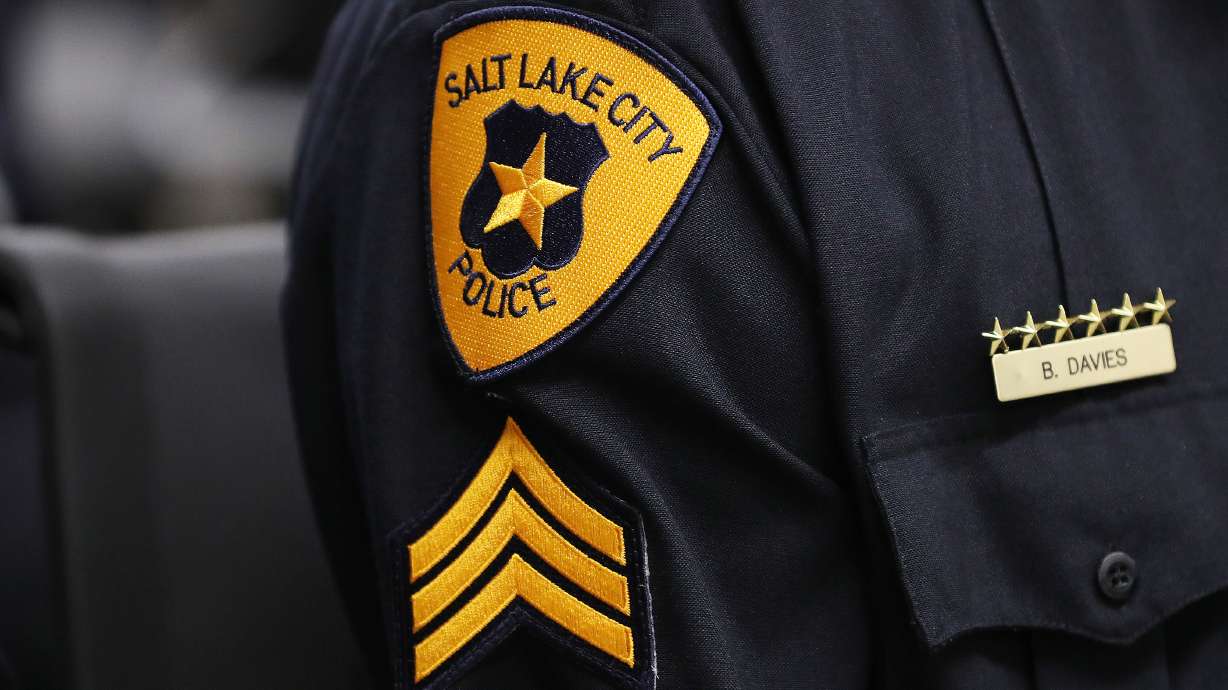Estimated read time: 4-5 minutes
This archived news story is available only for your personal, non-commercial use. Information in the story may be outdated or superseded by additional information. Reading or replaying the story in its archived form does not constitute a republication of the story.
SALT LAKE CITY — Under massive public pressure in wake of the killing of George Floyd in Minneapolis, the Salt Lake City Council on Thursday positioned itself to place tighter controls on a fraction of the city’s police budget and fund body cameras for every officer, amid other moves.
But the budget adjustment, which Salt Lake City Council members may approve on Tuesday, doesn’t slice deep into the Salt Lake City Police Department’s budget, as demanded by hundreds who have flooded the council’s virtual meetings in the last two weeks calling for a $30 million cut to the city’s police force.
At the beginning of Thursday’s specially scheduled City Council work session, Council Chairman Chris Wharton explained the council’s approach and why they weren’t considering a $30 million cut from the police department’s proposed $84 million budget this year.
“We’re grateful for those comments,” Wharton said, but noted staff, in investigating the origin of that $30 million figure, found it was first raised by advocates demanding cuts in Minneapolis, and “recalculated and applied proportionately” to Salt Lake City. A percentage cut of that size would jeopardize essential police services and doesn’t take into account programs Salt Lake City has funded with community-minded goals in mind, Wharton said.
“Not all police departments are created equal, and our police department, we believe, is further along in reaching many of these goals many these commenters articulated that they wanted to see,” he said.
But “regardless of the specific dollar amount,” Wharton emphasized, “We hear you. ... We also understand the climate in our country, and we share the concerns that are being raised.”
“So while there’s no magic $30 million budget cut, there is a City Council that hears what you’re saying and is committed to moving forward very seriously on this topic,” Wharton said. “Please stick with us in this conversation and recognize the budget adoption isn’t an end point, it’s a starting point. The City Council will continue to meet and explore these options in the coming months.”
We hear you. ... We also understand the climate in our country, and we share the concerns that are being raised.
–Chris Wharton, Council chairman
Instead, on Thursday staff presented to the City Council proposed budget maneuvers that “moves us forward in addressing the issues that have been raised,” Wharton said.
“It’s more of a surgical approach than just a blanket $30 million cut,” he said.
That approach, which the City Council unanimously approved in an informal vote ahead of Tuesday’s budget meeting, would add an additional $687,000 to provide all sworn police officers with body cameras, with data and Tasers. It would also include another $93,000 for technology fitted to police cruisers to automatically turn on the body cameras, rather than relying on the officer to push the camera’s button.
That budget adjustment would also include shuffling funds out of the police department budget and into “nondepartmental” spending to “increase transparency and prioritization” of those specific line items, according to city finance staff. In addition to the body camera funding, it would also include another $267,800 to ensure every police officer receives de-escalation training every year, as well as about $80,000 to add three social workers.
#RECAP At today's meeting, we held a follow-up discussion about the Police Department #budget for Fiscal Year 2020-21. Read the recap for information ➡ https://t.co/hgiWZghHa3#utpol#YourCityYourBusiness#SaltLakeCitypic.twitter.com/h5eYExZNrs
— Salt Lake City Council (@slcCouncil) June 12, 2020
Additionally, the City Council signaled support to put about $2.8 million of the police department’s budget into a holding account for future discussion, as city leaders work to launch a commission focused on racial equity and policing to help decide how to use that money. They also expressed support of putting about $1.6 million into a separate holding account to be used for “community investment” projects or programs for “communities of color.”
The council also signaled support of exploring “legislative intent” language to “re-evaluate the role we’re having the police department play and what budget is required to play that role” — a discussion that may lead to an ordinance that would place contingencies on certain grants or funds.
To pay for these initiatives, the council also expressed support for a judgment levy (or a one-time property tax increase) for about $456,000 and pulling money out of the city’s rainy day fund while keeping it above its 13% target in case of tough economic times.
“The structural deficit for next year is going to be serious,” acknowledged Jennifer Bruno, the council’s office deputy director. “If the economy doesn’t rebound until next year, there’s going to be even more serious cuts.”
But the council proceeded, expressing eagerness to prioritize short- and long-term action to address the public’s unrest over policing.
The council adjourned Thursday’s meeting with the expectation it would finalize the budget on Tuesday.










